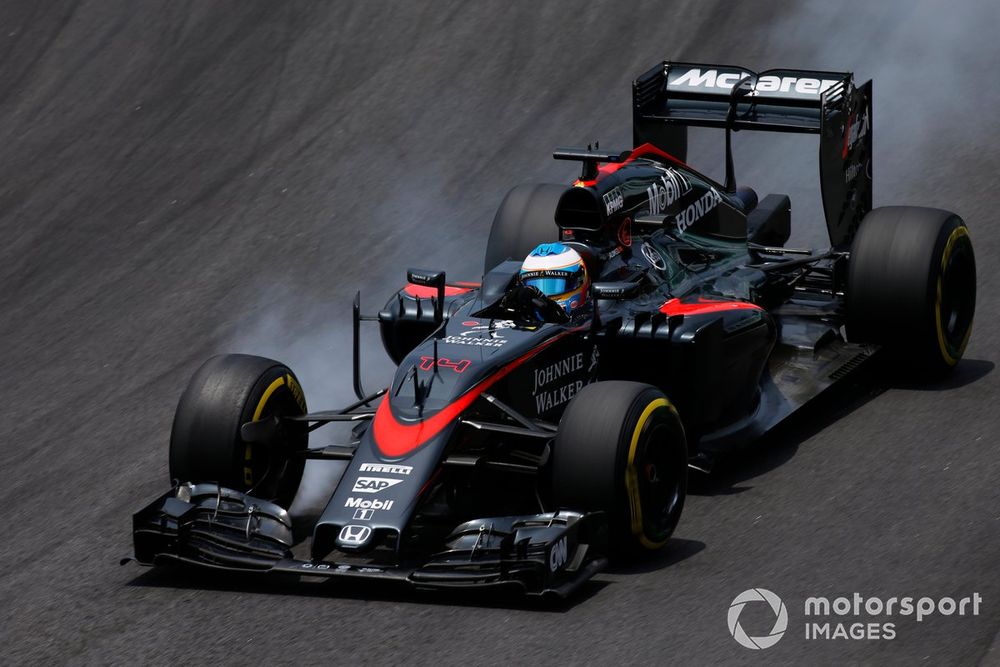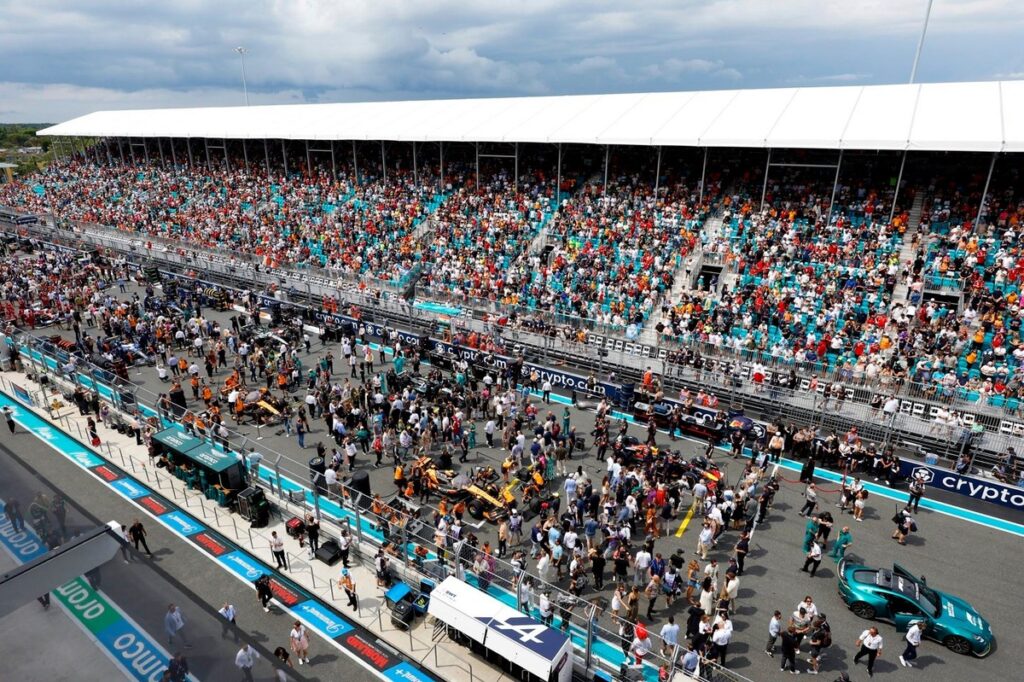When Formula 1 adopted turbocharged hybrid power units for the 2014 season, one manufacturer – Mercedes – had been ploughing resources into its project longer and more intensively than anyone else. The result was almost five seasons of total dominance while rivals struggled to catch up – and in the case of Renault, you could argue it never did.
The thought that the forthcoming shift to new power units with more electrical deployment could be a case of 2014 all over again is what keeps several team principals up at night.
This background angst has been humming through F1’s mechanism for months and evidence of its effects are all around: the short-lived bring-back-V10s mania at the beginning of the season and Alpine’s historically significant decision to drop its own (Renault) PUs in favour of Mercedes ones are just two examples. Most recently, in yet another management restructure at Audi – like London buses, wait long enough and several will come along almost at once – engine chief Adam Baker has been given the heave-ho.
Audi’s F1 engine programme is set up as a separate company, albeit as a fully owned subsidiary of Audi Sport. Baker – who spent over a decade being involved in racing powertrains at BMW, and was at Cosworth before that – had been in charge of F1 engine development at Audi Sport’s ‘Competence Centre Motorsport’ (it reads more elegantly in the original German as a typically Teutonic collision of nouns) in Neuburg an der Donau since the summer of 2022.
This latest bout of management musical chairs comes on the heels of word circulating that the Audi engine programme is in trouble, and company CEO Gernot Dollner turning up in person to what was described as a ‘crunch meeting’ between F1 stakeholders ahead of the Bahrain Grand Prix.
It’s understood that Dollner’s was once of the voices arguing strongly for greater catch-up provisions to be enshrined within the 2026 rules. Most others were in agreement – Mercedes, believed to be in the strongest position at the moment, less so – and this was one of the publicised outcomes.
The challenge is going to come in threading such a mechanism through F1’s current financial restrictions.
Audi CEO Gernot Dollner and Mattia Binotto, CEO and CTO, Stake F1 Team KICK Sauber
Photo by: Andy Hone / Motorsport Images
“There have been imbalances in the past,” FIA single-seater director Nikolas Tombazis told Autosport, “and normally such things get overcome with extra spending by people who need to recover, as well as with much hard work, sweat and tears.
“That is more difficult with the cost cap. There are already provisions in the regulations for underperformers – these were put in as a placeholder back in 2022 when the regulations were first approved. We are now in the process of discussing with the PU manufacturers what the exact provisions need to be for that.
“Just to be clear, we are discussing provisions that would enable an under-performer to carry out more development work. We are categorically not discussing any artificial mechanism that would boost the performance of an underperforming engine.
“This is necessary under the cost cap, because [otherwise] we could be facing a situation where an underperformer would never be able to catch up under the cost cap.
“There is a huge amount of know-how in F1. We’re asking people [i.e. new PU manufacturers] to jump into the deep end when they don’t have this accumulated know-how over 10 or 15 years, so we feel that morally and from a fairness point of view there must be a mechanism which enables them to catch up and compete at the same level.
“We don’t want to have somebody who’s eternally condemned to misery and humiliation.”
The case study here is Honda – which, despite a rich history in F1 and wider motorsport, failed dismally in its first efforts to create a competitive hybrid PU. Getting on par with the likes of Mercedes and Ferrari took years, included a divorce from McLaren after three seasons together, and sucked in vast quantities of financial and engineering resource – to the extent that touring car programmes, for instance, had their budgets slashed.

Fernando Alonso, McLaren MP4-30 Honda
Photo by: Glenn Dunbar / Motorsport Images
Having reached the pinnacle, Honda decided enough was enough and announced its withdrawal from F1 again, only to U-turn on that decision as its partnership with Red Bull blossomed into multiple championship wins and the greater electrification of the 2026 rules package proved sufficiently aligned with its road-car business.
“Honda is an incredibly talented organisation with very capable people, and fortunately they had the resilience and stamina and engineering capability to push through,” said Tombazis. “If they had not been able to spend a bit more money during that period, maybe they would not have managed to catch up. We want new PU manufacturers to stay for the long haul.”
At a meeting of the F1 Commission on the Thursday after the Saudi Arabian Grand Prix all the parties agreed on the principle of a catch-up mechanism, but the specifics had to be booted up the road. That’s partly because there was a wider and somewhat more pressing discussion around the possibility of changing the mix of electrical deployment during races, to address the fears of cars running out of energy on long straights.
Ideas for the catch-up mechanism were passed on to a separate power unit working group, which will formulate more detailed proposals. Autosport understands that the most likely outcome of this will be a sliding scale of dyno testing and engine budget cap concessions, depending on the scale of performance and/or reliability disparities.
This would be roughly analogous to the current regime governing aerodynamic testing, where teams at the top of the constructors’ championship face greater constraints on wind tunnel and CFD research than those at the bottom.
The challenge is now the detail, and how to avoid loopholes. While simplification and cost-cutting were central to the philosophy of the 2026 engine package, once competitive instinct kicks in it is difficult not to spend.

F1 2026 FIA car renders
Photo by: FIA
For instance, pistons in the current generation of PUs are made of high-grade steel in highly complex geometries. Given the mechanical and thermal stresses in this area, the manufacturers already in F1 have built up a wealth of expertise and understanding – the “know-how” to which Tombazis alludes. A single piston costs in the region of $10,000 to manufacture.
It’s understood that the new manufacturers interested in joining F1 when the 2026 regulations were first discussed – including Porsche – pushed hard for aluminium to be adopted instead, only to reverse out of that position once they had juggled the figures required and spotted opportunities where advantages could be gained.
The result has been an inevitable dilution of the cost-cutting drive.
“As the FIA we are the moderators during the discussion of the regulations, mindful to contain costs and create a level playing field for all,” said Tombazis. “There is some strong resistance at times, as you would expect, from teams or PU Manufacturers protecting their interests or investment.
“Cost-cutting and level of technological freedom are at loggerheads with each other. It is not easy to have both.”
In this article
Be the first to know and subscribe for real-time news email updates on these topics
Subscribe to news alerts
Read the full article here

